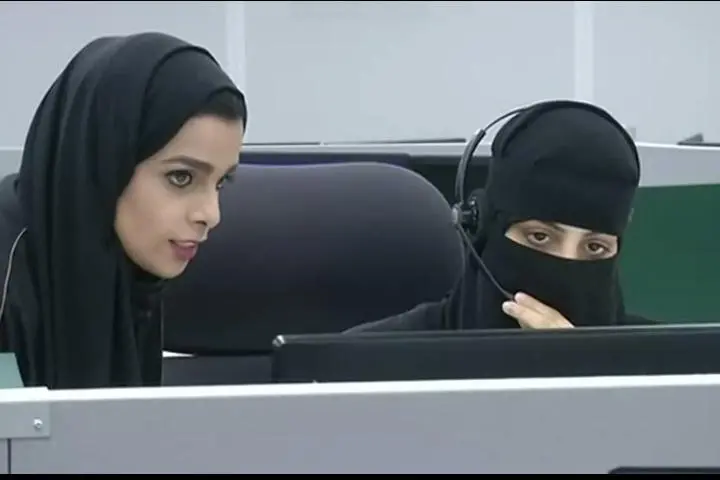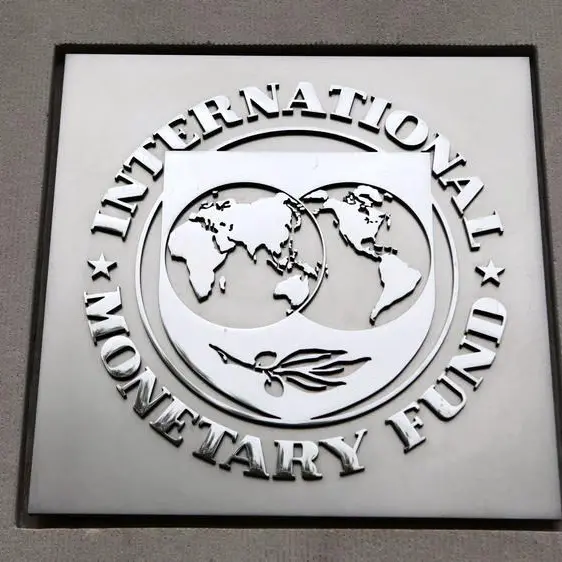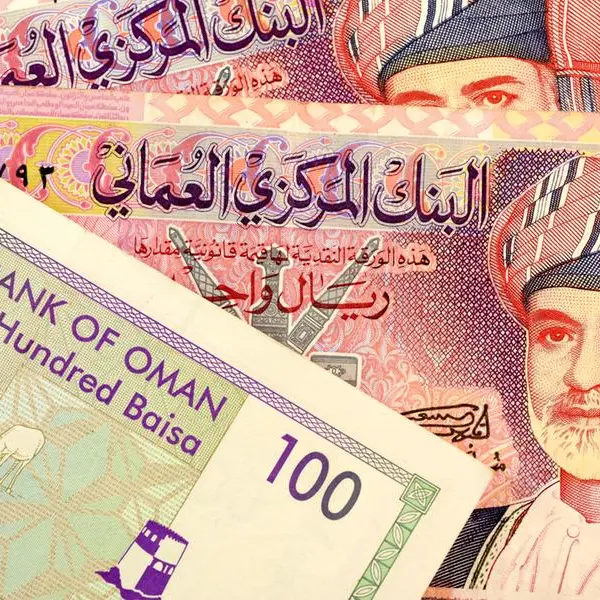PHOTO
More than one million Saudi women are currently looking for employment in Saudi Arabia, despite a push by policymakers to increase participation of this overshadowed, yet significant, portion of the labour force.
Over 80 percent of Saudi job seekers are female, and almost half of these women hold bachelor's (or higher) degrees, according to recent data covering employment statistics for the third quarter of 2017. These numbers reflect the gaps that exist in levels of education, salaries and job opportunities between Saudi men and women.
“Women are more likely to have higher education degrees - more than two times the number of unemployed men,” Karen Young, a senior resident scholar at the Arab Gulf States Institute in Washington told Zawya.
“Saudi women also face a wage gap, especially in the private sector, where average salaries for men are close to 8,000 Saudi riyals a month, and only 5,000 Saudi riyals for women,” she added via email.
“So women are better educated, less employed, and underpaid. The problem is entrenched inequality in pay and access (to jobs), as much as opportunity. Women are certainly interested in working, as the data on job seekers suggests,” Young says.
The total number of Saudi job seekers reached 1,231,549 in the third quarter of 2017 according to the Saudi General Authority for Statistics. Of these, 1,040,727 (84.5 percent) were females and 190,822 (15.5 percent) were males.
Yet Adil A. Al-Qusadi, CEO of Riyadh-based consultancy Gulf Think Tank, says that a distinction needs to be drawn between qualified and skilled workers. Although many university graduates have qualifications, they don’t necessarily possess the skills required in the labour market.
“The booming of the number of higher-education (establishments) in the last 10 years has directly affected the quality of academic foundation,” Al-Qusadi says in an emailed response to questions.
Al-Qusadi says that there had been “dozens” of new universities established, led by the Ministry of Higher Education. However, he added that the ministry’s efforts had been geared towards completing the necessary buildings and infrastructure, with less focus placed on the core education programmes that they would offer.
Plugging the skills gap
He blames the gap between the qualifications achieved and skills required in the market on inconsistent communication and collaboration between educators, legislators and employers, and added that the problem has been magnified by the fact that a scholarship programme has helped lots of Saudi women to gain qualifications, only for them to enter into an unstable and unprepared jobs market.
“(A) few years later, the outcome of that chaos led to a vastly growing number of under-skilled graduates, or highly-qualified foreign-universities graduates, with minimum mitigation plans in place. Being an already vulnerable group, women were affected more than anyone else,” he says.
The size of Saudi Arabia’s labour force was estimated at almost 5.8 million by the end of September 2017, according the General Authority for Statistics, of which only around 1.3 million (22 percent) are women.
“As part of Vision 2030 agenda, Saudi authorities are working to increase the participation of women in the labor market from 22 percent to 30 percent,” Murtadha Al-Yousef, the founder and general manager of Saudi Employment- a firm that provides recruitment services for Saudi nationals to the private and public sector- tells Zawya by phone.
That objective is expected to encourage a multilateral collaboration between all of the major stakeholders, according to Al Qusadi, which requires two major outcomes.
“First is bridging the gap between university outputs and the labour market needs,” says Al-Qusadi. “Some initiatives may include rehabilitating the under-skilled university graduates, strengthening the curricular and extra-curricular education, and finding out innovative ways to enhance the educational and training program out of the university system.”
He adds: “Second is to smartly manage to create more jobs, activate dormant sectors like non-profit organisations, as well as eradicate the unproductive employment,” he adds.
Cultural and historical barriers also seem to complicate this thorny issue of female unemployment in the Kingdom, despite an accelerating pace of reforms that aim to raise womens’ contribution to national productivity.
"Development in Saudi initially started in the main cities, and that required the migration of men from the villages and remote areas to the capital and major cities. But migration of women was not possible for several reasons, including family and social factors,” Saudi economic consultant Fayez Al Rabea tells Zawya in Arabic by phone.
“By the time development reached remote areas, the hardline movement played a role in limiting women's employment to health and education sectors, and on a small scale,” he adds.
Now that Saudi society is returning to moderation and rejecting extremism, it must open other fields of work for women, according to Al Rabea, who believes that women could soon be working in roles in the military, markets, companies and factories, just like men.
Driving change
Observers expect that the decision taken in September last year by King Salman bin Abdulaziz Al Saud to lift a longstanding ban on women driving in the kingdom, starting from June this year, will ease conditions for women looking to enter the jobs market.
“I believe that the royal decree to allow women to drive will, of course, positively influence women's employment opportunities and their mobility and will ease the obstacles in transportation that long faced women in the past,” says Saudi Employment firm's Al-Youssef.
“App-based ride-hailing car companies have recently contributed to creating many opportunities for young people and now comes the role of women in this field as well,” Al-Youssef notes.
The Human Resources Fund (Hadaf) is also supporting by providing transportation for female Saudi employees, as well as creating initiatives in part-time and full-time programmes to accommodate women seeking employment.
“Undoubtedly, recent royal decisions to inject billions to stimulate the private sector and to support small and medium enterprises by restoring government fees will create additional employment opportunities for women,” Al-Youssef adds.
Saudi Arabia last month approved a 7 billion Saudi riyal package of measure to support SMEs through the reimbursements of government fees, according to state-run Saudi Press Agency, as part of its economic overhaul plan to stimulate the private sector and create new employment opportunities.
The latest official statistics show that the unemployment rate among Saudi women seeking work was 32.7 percent in the third quarter of 2017, while the unemployment rate among Saudi men was 7.4 percent. The total Saudi unemployment rate remained unchanged from the previous quarter, at 12.8 percent.
(Reporting by Nada Al Rifai; Editing by Michael Fahy)
(nada.rifai@thomsonreuters.com).
Our Standards: The Thomson Reuters Trust Principles
Disclaimer: This article is provided for informational purposes only. The content does not provide tax, legal or investment advice or opinion regarding the suitability, value or profitability of any particular security, portfolio or investment strategy. Read our full disclaimer policy here.
© ZAWYA 2018
Over 80 percent of Saudi job seekers are female, and almost half of these women hold bachelor's (or higher) degrees, according to recent data covering employment statistics for the third quarter of 2017. These numbers reflect the gaps that exist in levels of education, salaries and job opportunities between Saudi men and women.
“Women are more likely to have higher education degrees - more than two times the number of unemployed men,” Karen Young, a senior resident scholar at the Arab Gulf States Institute in Washington told Zawya.
“Saudi women also face a wage gap, especially in the private sector, where average salaries for men are close to 8,000 Saudi riyals a month, and only 5,000 Saudi riyals for women,” she added via email.
“So women are better educated, less employed, and underpaid. The problem is entrenched inequality in pay and access (to jobs), as much as opportunity. Women are certainly interested in working, as the data on job seekers suggests,” Young says.
The total number of Saudi job seekers reached 1,231,549 in the third quarter of 2017 according to the Saudi General Authority for Statistics. Of these, 1,040,727 (84.5 percent) were females and 190,822 (15.5 percent) were males.
Yet Adil A. Al-Qusadi, CEO of Riyadh-based consultancy Gulf Think Tank, says that a distinction needs to be drawn between qualified and skilled workers. Although many university graduates have qualifications, they don’t necessarily possess the skills required in the labour market.
“The booming of the number of higher-education (establishments) in the last 10 years has directly affected the quality of academic foundation,” Al-Qusadi says in an emailed response to questions.
Al-Qusadi says that there had been “dozens” of new universities established, led by the Ministry of Higher Education. However, he added that the ministry’s efforts had been geared towards completing the necessary buildings and infrastructure, with less focus placed on the core education programmes that they would offer.
Plugging the skills gap
He blames the gap between the qualifications achieved and skills required in the market on inconsistent communication and collaboration between educators, legislators and employers, and added that the problem has been magnified by the fact that a scholarship programme has helped lots of Saudi women to gain qualifications, only for them to enter into an unstable and unprepared jobs market.
“(A) few years later, the outcome of that chaos led to a vastly growing number of under-skilled graduates, or highly-qualified foreign-universities graduates, with minimum mitigation plans in place. Being an already vulnerable group, women were affected more than anyone else,” he says.
The size of Saudi Arabia’s labour force was estimated at almost 5.8 million by the end of September 2017, according the General Authority for Statistics, of which only around 1.3 million (22 percent) are women.
“As part of Vision 2030 agenda, Saudi authorities are working to increase the participation of women in the labor market from 22 percent to 30 percent,” Murtadha Al-Yousef, the founder and general manager of Saudi Employment- a firm that provides recruitment services for Saudi nationals to the private and public sector- tells Zawya by phone.
That objective is expected to encourage a multilateral collaboration between all of the major stakeholders, according to Al Qusadi, which requires two major outcomes.
“First is bridging the gap between university outputs and the labour market needs,” says Al-Qusadi. “Some initiatives may include rehabilitating the under-skilled university graduates, strengthening the curricular and extra-curricular education, and finding out innovative ways to enhance the educational and training program out of the university system.”
He adds: “Second is to smartly manage to create more jobs, activate dormant sectors like non-profit organisations, as well as eradicate the unproductive employment,” he adds.
Cultural and historical barriers also seem to complicate this thorny issue of female unemployment in the Kingdom, despite an accelerating pace of reforms that aim to raise womens’ contribution to national productivity.
"Development in Saudi initially started in the main cities, and that required the migration of men from the villages and remote areas to the capital and major cities. But migration of women was not possible for several reasons, including family and social factors,” Saudi economic consultant Fayez Al Rabea tells Zawya in Arabic by phone.
“By the time development reached remote areas, the hardline movement played a role in limiting women's employment to health and education sectors, and on a small scale,” he adds.
Now that Saudi society is returning to moderation and rejecting extremism, it must open other fields of work for women, according to Al Rabea, who believes that women could soon be working in roles in the military, markets, companies and factories, just like men.
Driving change
Observers expect that the decision taken in September last year by King Salman bin Abdulaziz Al Saud to lift a longstanding ban on women driving in the kingdom, starting from June this year, will ease conditions for women looking to enter the jobs market.
“I believe that the royal decree to allow women to drive will, of course, positively influence women's employment opportunities and their mobility and will ease the obstacles in transportation that long faced women in the past,” says Saudi Employment firm's Al-Youssef.
“App-based ride-hailing car companies have recently contributed to creating many opportunities for young people and now comes the role of women in this field as well,” Al-Youssef notes.
The Human Resources Fund (Hadaf) is also supporting by providing transportation for female Saudi employees, as well as creating initiatives in part-time and full-time programmes to accommodate women seeking employment.
“Undoubtedly, recent royal decisions to inject billions to stimulate the private sector and to support small and medium enterprises by restoring government fees will create additional employment opportunities for women,” Al-Youssef adds.
Saudi Arabia last month approved a 7 billion Saudi riyal package of measure to support SMEs through the reimbursements of government fees, according to state-run Saudi Press Agency, as part of its economic overhaul plan to stimulate the private sector and create new employment opportunities.
The latest official statistics show that the unemployment rate among Saudi women seeking work was 32.7 percent in the third quarter of 2017, while the unemployment rate among Saudi men was 7.4 percent. The total Saudi unemployment rate remained unchanged from the previous quarter, at 12.8 percent.
(Reporting by Nada Al Rifai; Editing by Michael Fahy)
(nada.rifai@thomsonreuters.com).
Our Standards: The Thomson Reuters Trust Principles
Disclaimer: This article is provided for informational purposes only. The content does not provide tax, legal or investment advice or opinion regarding the suitability, value or profitability of any particular security, portfolio or investment strategy. Read our full disclaimer policy here.
© ZAWYA 2018












